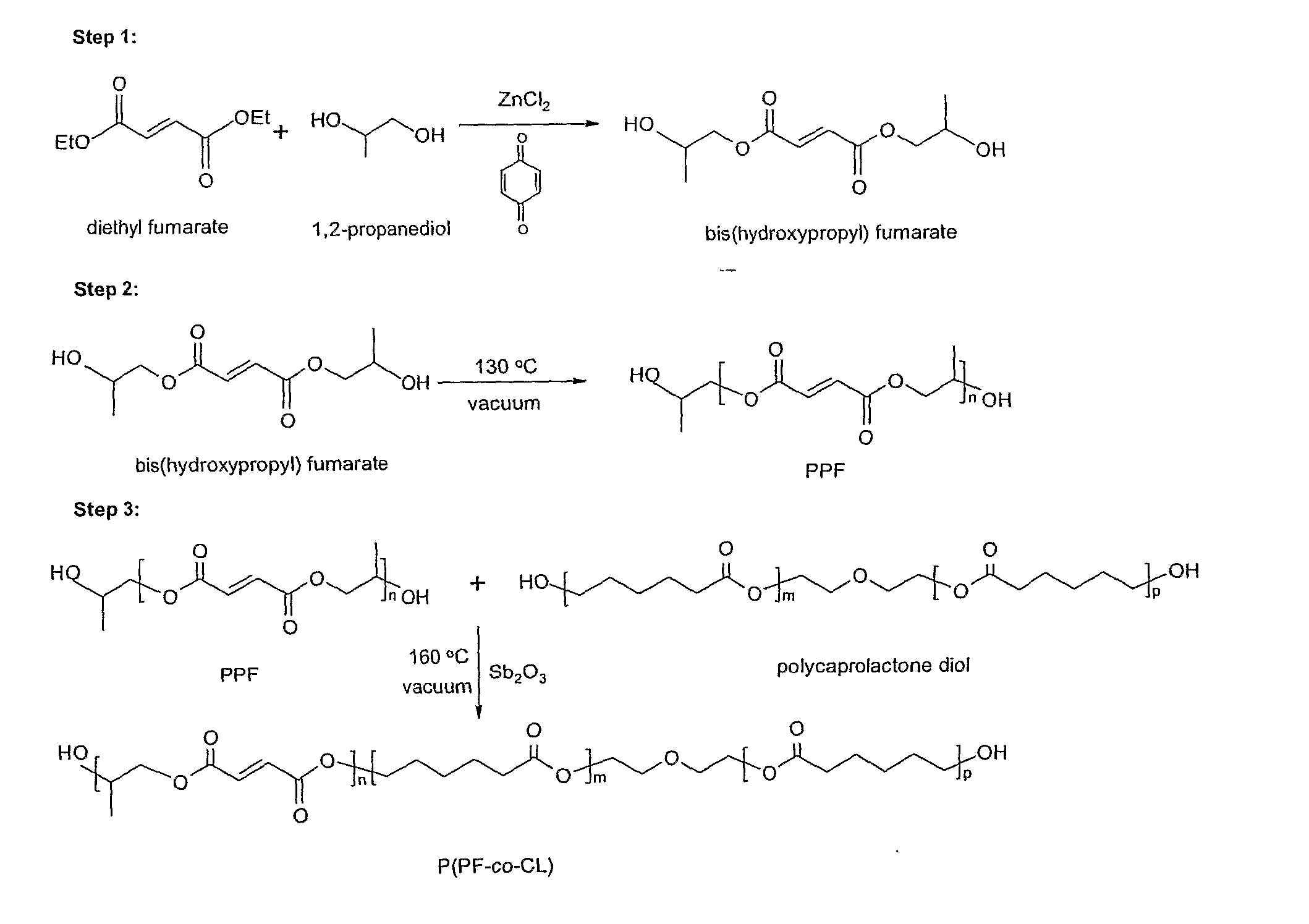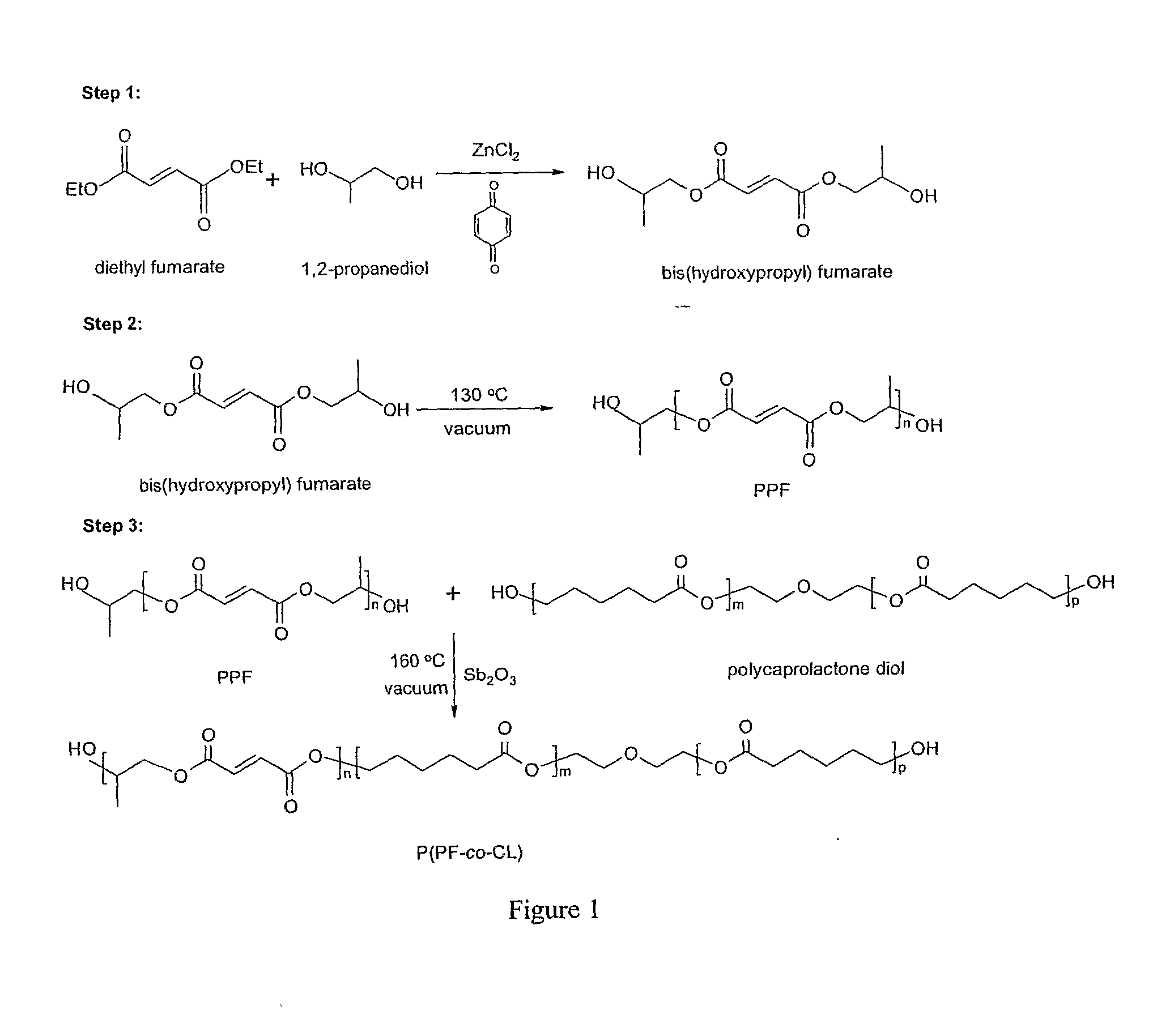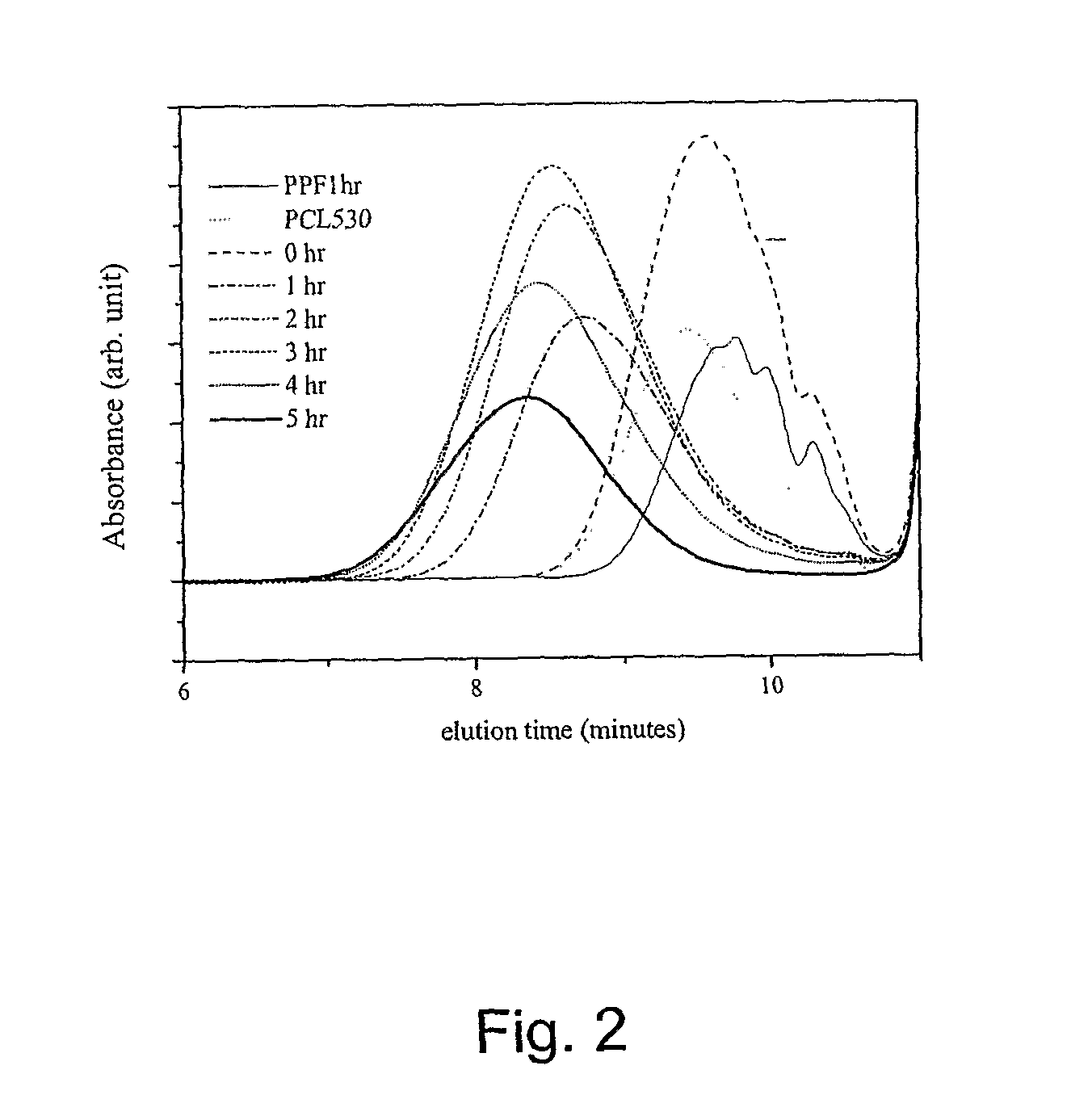Block Copolymers of Polycarpolactone and Poly (Propylene Funarate)
a technology which is applied in the field of synthesis of block copolymers of polycarpolactone and polycarpolactone, can solve the problems of reducing the rate of graft incorporation compared, limiting the spectrum of cases in which it can be used alone, and the possibility of pathogen transfer from the donor to the host, so as to improve the mechanical strength and crosslinkability of poly, improve the mechanical strength and crosslinkability, and the effect of reducing
- Summary
- Abstract
- Description
- Claims
- Application Information
AI Technical Summary
Benefits of technology
Problems solved by technology
Method used
Image
Examples
examples
[0042] The following Examples have been presented in order to further illustrate the invention and are not intended to limit the invention in any way.
A. Synthesis of P(PF-co-CL)
[0043] PCL diols [α,ω-dihydroxy poly(ε-caprolactone)] with nominal molecular weights of 530, 1250, and 2000 g·mol−1 were purchased from Aldrich Co. (Milwaukee, Wis.) and had a chemical structure as H—[O(CH2)5CO—]mOCH2CH2—O—CH2CH2O[—OC(CH2)5O]n—H. Prior to copolymerization, a certain amount of PCL diol was dried overnight in a vacuum oven at 50° C. All the other chemicals in the present study were also purchased from Aldrich Co. In the first step, 259 grams of diethyl fumarate and 342 grams of 1,2-propylene glycol are mixed together in 2 L three-neck round-bottom flask with 0.33 grams of hydroquinone as a crosslinking inhibitor and 2.04 grams of zinc chloride as a polymerization catalyst. The reaction is first performed to obtain fumaric diester at 100° C. for 1 hour and then 150° C. for 7 hours. Excess of 1...
PUM
| Property | Measurement | Unit |
|---|---|---|
| molecular weight | aaaaa | aaaaa |
| molecular weight | aaaaa | aaaaa |
| temperature | aaaaa | aaaaa |
Abstract
Description
Claims
Application Information
 Login to View More
Login to View More - R&D
- Intellectual Property
- Life Sciences
- Materials
- Tech Scout
- Unparalleled Data Quality
- Higher Quality Content
- 60% Fewer Hallucinations
Browse by: Latest US Patents, China's latest patents, Technical Efficacy Thesaurus, Application Domain, Technology Topic, Popular Technical Reports.
© 2025 PatSnap. All rights reserved.Legal|Privacy policy|Modern Slavery Act Transparency Statement|Sitemap|About US| Contact US: help@patsnap.com



